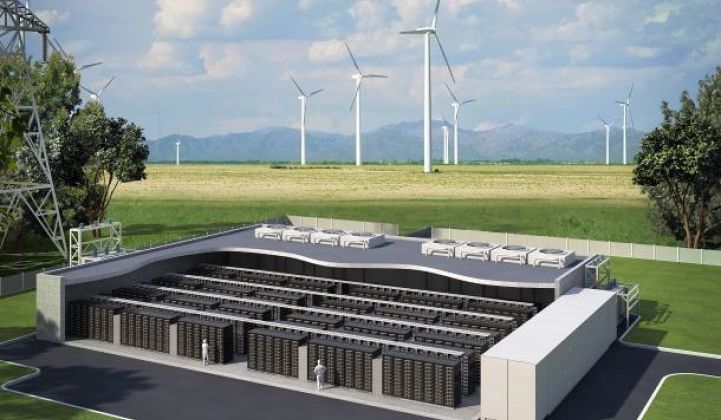With utilities preparing to invest billions of dollars in system capacity over the next several years, “the time is now” for utilities to include energy storage in their integrated resource planning, according to the Energy Storage Association.
To make its case, ESA recently prepared a primer on how to evaluate advanced energy storage as a long-term option for system capacity and flexibility. The primer builds on a 2014 Navigant Consulting report prepared for the trade group.
Utilities in 33 states are currently required to file and gain regulatory approval for their integrated resource plans. IRPs are created to determine the least-cost combination of resources that enables a utility to meet forecasted demand, as well as some established reserve margin, over a specified future period, typically ranging from 10 to 20 years.
Energy storage is becoming a more compelling resource option, ESA argues, given the declining costs of energy storage and a rising number of large-scale deployments. Non-hydro utility-scale storage deployments in the U.S. have grown from about 60 megawatts in 2013 to 192 megawatts in 2015, and single deployments under contract now range up to 100 megawatts. U.S. deployments to date have been concentrated in California and the PJM wholesale electricity market, where storage is primarily used for renewables integration and ancillary benefits.
While some utilities have expressed interest in studying energy storage in the context of resource planning, ESA notes that informational barriers remain. The problem is that many IRP modeling systems are not granular enough to capture the flexibility of storage operations, and use inaccurate and outdated cost information.
“Utilities are thus missing the opportunity to analyze, evaluate and procure advanced storage as a cost-effective capacity resource, putting ratepayers at risk of significant imprudent investments,” the primer states.
Access to energy storage data has been a concern for some utilities, said Jason Burwen, policy and advocacy director at ESA. But “now there is data on cost and performance,” he said. Energy storage “is no longer something that can be screened out.”
Today, a utility’s challenge relates more to choosing a resource planning model that can fully represent the benefits of storage and how the technology functions.
Accounting for time intervals in IRP modeling is one of the challenges. “Typical production cost models are relatively simple and calculate economic options by modeling generator operations to meet expected load for each hour chronologically over a period of many years,” according to the ESA paper. “The main shortcoming of this type of model is that advanced storage can provide flexibility services on an intra-hourly basis, and there is no way to capture that service in an hourly model.” Simpler models that extrapolate from a small sample of hours also exclude significant storage services.
ESA says the solution is to use fine-grained planning models that examine sub-hourly intervals. Several commercial models that can examine intra-hourly dynamics already exist.
Another issue is that current IRP modeling systems fail to account for the full range of benefits that energy storage offers. In addition to capacity, advanced energy storage provides high value flexibility services, like frequency regulation or ramping support. But planners don’t always have the right tools to evaluate those flexibility benefits and subtract them from the cost of storage -- or what ESA calls a “net cost of capacity” analysis of capacity investment options.
To capture the benefits of storage, the primer highlights a net cost of capacity formula used by Portland General Electric in its 2016 draft integrated resource plan: Net cost of capacity = Total installed cost - Operational benefits (i.e., flexibility of operations and avoided costs). Preliminary findings from the draft IRP found that operational benefits of storage were expected to be approximately double the capacity value ($90 per kilowatt per year versus $40 per kilowatt per year, respectively).
Many operational benefits of energy storage accrue as avoided costs, the primer states. These benefits include reduced operating reserve requirements, reduced curtailment of renewable resources and reduced local emissions for areas with emissions restrictions. The ESA primer includes the following table to illustrate the operational benefits that storage can provide.

Finally, ESA notes that it’s critical that planners use the latest advanced storage cost estimates and forecasts for cost model inputs. Cost data is now available from several sources, including GTM Research. Energy storage has demonstrated a declining cost curve over time, due to increasing scale and manufacturing capability. ESA’s projected net cost of storage is shown by the blue band in the graph below.
As energy storage becomes more competitive, ESA argues that the case for utilities to include storage in their IRPs becomes more compelling. And as resource mixes continue to include more variable generation sources, ESA notes that supply flexibility will become essential. In this context, the trade group urged utility regulators to use their existing authority to ask utilities to appropriately consider storage in resource planning “and ensure they meet their duty to ratepayers.”

* * *
Will Driscoll is a writer and analyst. Previously, he served as a project manager at ICF Consulting, where he conducted analyses for the U.S. Environmental Protection Agency.



